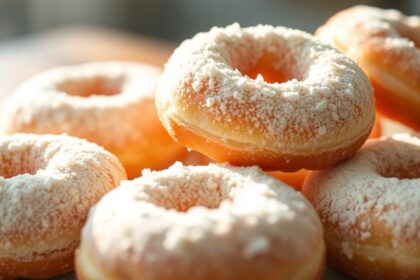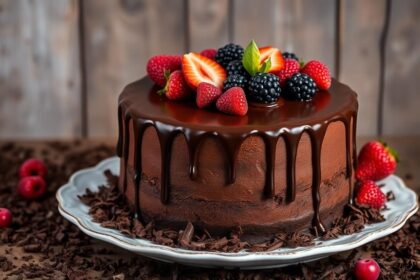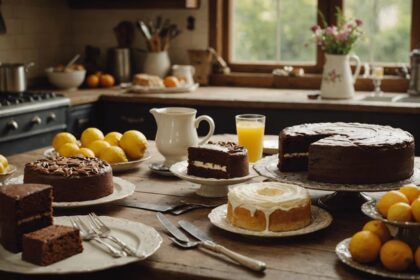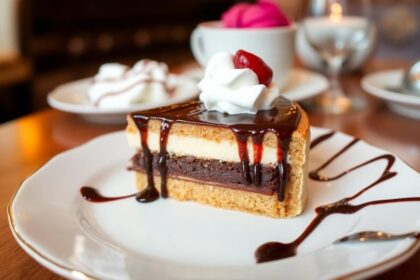To master classic French pastries like eclairs and macarons, focus on precision, creativity, and a touch of finesse. These treats will transport your taste buds to Paris' charming streets with each bite. Learn about the rich history of French pastries, master essential eclair ingredients, and perfect the macaron technique. Discover tips for piping choux pastry, mastering fillings, and decorating with flair. Troubleshoot common pastry issues for perfect results. Elevate your presentation with elegant platters and creative garnishes. Pair these delights with coffee or tea for an exquisite experience. Your journey to pastry perfection awaits with these expert insights.
The History of French Pastries
French pastries trace their origins back to the Middle Ages when they were initially savored by nobility and royalty. The intricate art of French pastry-making has a rich history, with notable figures like Catherine de Medici playing a vital role in popularizing these delectable treats. Macarons, a beloved French pastry known for their delicate shells and flavorful fillings, have evolved over the centuries to become a symbol of French culinary excellence. Parisian pastry chef Pierre is credited with revolutionizing macarons by introducing vibrant colors and a variety of innovative flavors, setting the stage for the modern macaron craze.
The history of French pastries is a fascinating blend of Middle Eastern influences and European creativity, resulting in the diverse array of pastries enjoyed today. From the royal courts of medieval France to the bustling patisseries of modern-day Paris, French pastries have captured the hearts and taste buds of people around the world.
Essential Ingredients for Eclairs
When making eclairs, you'll need key ingredients like water, butter, flour, eggs, and a pinch of salt. These elements are essential for creating the signature choux pastry with its high moisture content.
Mastering the essentials like butter for flavor and eggs for structure will help you perfect your eclair recipe.
Key Eclair Ingredients
To create delicious eclairs, you'll need key ingredients like water, butter, flour, eggs, and a pinch of salt. The choux pastry, the base for eclairs, is made by combining water, butter, and flour into a smooth dough.
Eggs are then added one at a time to achieve the essential consistency for piping the eclairs onto a baking sheet. The water helps create steam during baking, which puffs up the pastry, while butter adds richness and flavor.
Eggs play an important role in binding the ingredients together and giving the pastry its structure. These essential ingredients work together harmoniously to create the light, airy texture and rich flavor that define a perfect eclair.
Must-Have Eclair Elements
To achieve perfect eclairs, make sure you have on hand the essential ingredients: flour, butter, eggs, and water to form the choux pastry base.
French pastry chefs emphasize the importance of using high-quality ingredients to make French pastries like eclairs truly exceptional. One example of this is using European-style butter, which has a higher butterfat content, resulting in a richer and more flavorful choux pastry.
Eclair Recipe Essentials
For perfect eclairs, make sure you gather the essential ingredients: butter, water, flour, eggs, and salt. Butter adds richness and flavor to the choux pastry, while water helps create steam for the hollow interior of eclairs. Eggs provide structure and help the pastry rise during baking. Salt is vital in enhancing the overall flavor profile of the eclair dough.
When preparing your eclair recipe, make sure you use fresh eggs for the best results. Additionally, opt for unsalted butter to have better control over the salt content in your pastry. These ingredients work together harmoniously to create the delightful and classic French pastry known as the eclair.
Perfecting the Macaron Technique
When making macarons, achieving the perfect shell texture and exploring creative filling flavor combinations are key points to focus on. Mastering the technique of creating a smooth, shiny shell that delicately cracks upon biting into it will elevate your macarons.
Experimenting with different fillings like ganache, buttercream, or fruit curds can provide a delightful contrast to the sweet shell.
Macaron Shell Texture
Achieving the perfect macaron shell texture hinges on the precise technique of folding the almond flour and meringue mixture to attain the desired consistency. French pastry chefs emphasize the importance of achieving a smooth and shiny batter with a lava-like flow.
Resting the piped macaron shells before baking is an essential step that helps develop a smooth, shiny surface and the signature 'feet' at the base of the macarons.
Proper baking conditions, including temperature and humidity, are vital for the ideal texture. Underbaking can result in a chewy texture, while overbaking may lead to a dry shell.
The perfect macaron shell should possess a crisp exterior, a delicate, airy interior, and a slight chewiness, offering a delightful balance of textures in each bite.
Filling Flavor Combinations
Perfecting the art of macaron-making involves expertly pairing diverse filling flavors to create a harmonious blend of tastes with each bite. Common filling flavor combinations for macarons include chocolate ganache, raspberry jam, salted caramel, lemon curd, and pistachio buttercream.
By combining complementary flavors like chocolate with raspberry or lemon with blueberry, you can achieve a balanced and delicious macaron. Experimenting with unique filling flavors such as coffee, passion fruit, lavender, or matcha can add exciting twists to traditional macarons.
Infusing filling flavors with herbs, spices, or extracts can enhance the taste profile, creating sophisticated macaron combinations. You can also elevate both the visual appeal and taste complexity of the pastry by combining multiple filling flavors in one macaron, creating a layered or swirled effect.
Tips for Piping Choux Pastry
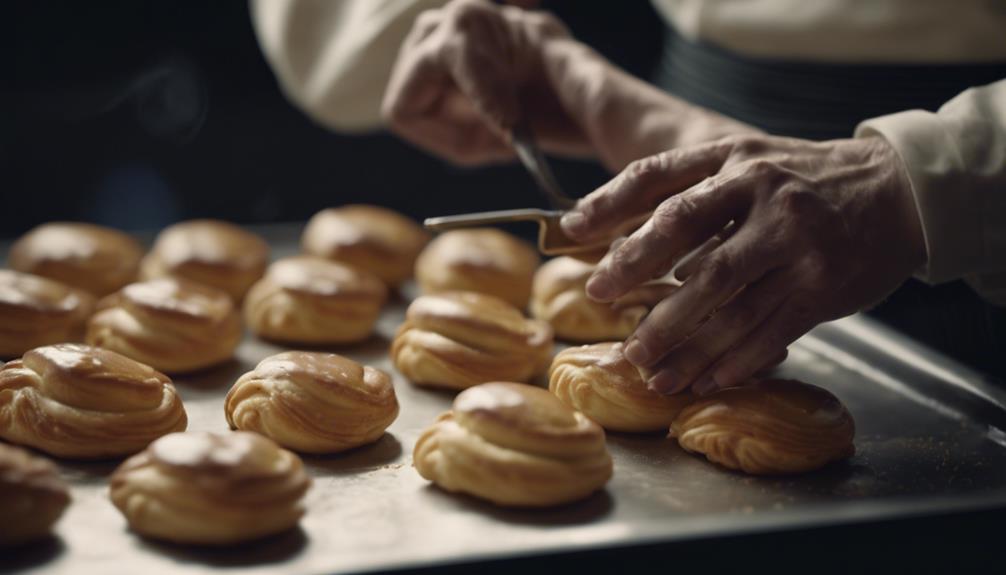
For achieving consistent shapes and sizes when piping choux pastry, opt for using a round piping tip like the Wilton #12. Hold the piping bag at a 45-degree angle to the baking sheet to pipe the choux pastry dough smoothly and evenly. Apply even pressure on the piping bag while piping to avoid air bubbles and guarantee uniform eclairs or cream puffs. Make sure to leave enough space between each piped dough to allow for expansion during baking, preventing them from sticking together. Practicing piping choux pastry on a parchment-lined baking sheet before the final baking can help perfect your technique.
When troubleshooting, if the piped dough breaks instead of forming a smooth shape, the dough might be too thick. In contrast, if the shapes deflate after piping, the dough could be too thin. Experimenting with different pressures on the piping bag can help you find the right consistency. Additionally, for creative choux pastry shapes and decorations, consider using different piping tips or techniques to achieve various designs. When it comes to eclair filling, explore flavor variations such as chocolate, vanilla, coffee, or fruit-infused creams to elevate the taste of your pastries.
Mastering French Pastry Fillings
Experiment with a range of French pastry fillings to elevate the flavors and textures of your creations. When considering flavor pairings, think about how different fillings can complement the base pastry. For example, pairing a tangy fruit preserve with a rich chocolate ganache can create a delightful contrast of sweet and tart flavors.
Texture is also key in mastering French pastry fillings. The smooth and creamy consistency of pastry cream can be balanced with a crunchy element like caramelized nuts or delicate pastry layers. Additionally, varying the filling consistency can enhance the overall experience of your pastries.
Whether you prefer a thick and luscious chocolate ganache or a light and airy buttercream, the consistency of the filling can impact the mouthfeel and enjoyment of the pastry. By experimenting with different flavor profiles, textures, and consistencies, you can master the art of French pastry fillings and create decadent treats that delight the senses.
Decorating Techniques for Pastries
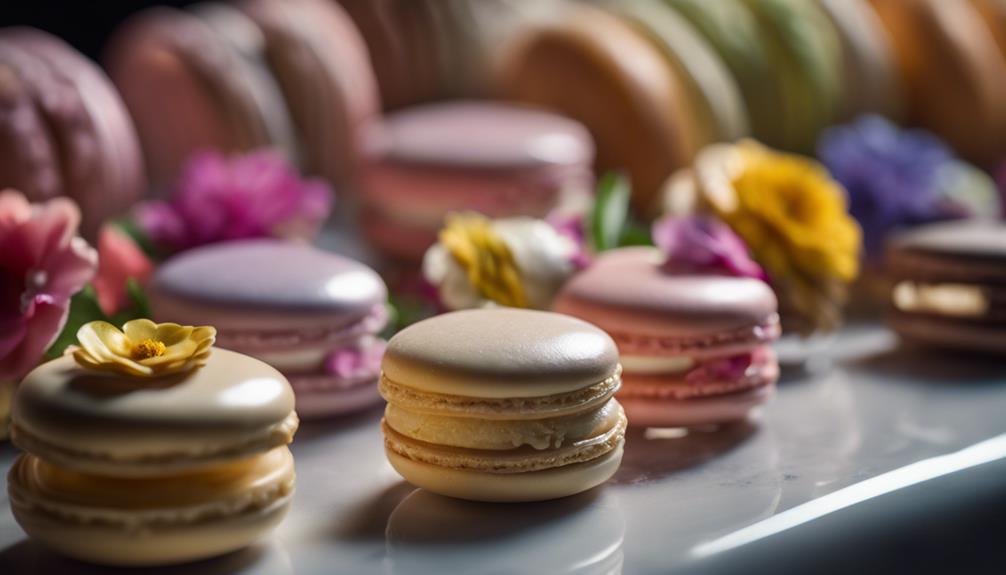
To enhance the visual appeal of your pastries, consider incorporating various decorative techniques such as piping intricate designs with buttercream or royal icing. Buttercream piping allows you to create delicate swirls, flowers, or intricate patterns on eclairs and macarons, adding an elegant touch to your creations.
Another creative option is sugar stenciling, where you can dust powdered sugar or cocoa powder over stencils to imprint beautiful designs on your pastries.
For a more luxurious presentation, consider using edible flowers, gold leaf, or edible glitter to make your pastries visually stunning. Chocolate decorations such as curls, shavings, or tempered chocolate shapes can also elevate the look of your pastries, adding a touch of sophistication.
Additionally, brushing your pastries with flavored glazes not only provides a glossy finish but also enhances the overall flavor profile, making your treats even more irresistible. Experimenting with these decorating techniques won't only make your pastries visually appealing but also showcase your creativity and attention to detail.
Troubleshooting Common Pastry Issues
If you encounter common pastry issues while baking, troubleshooting them effectively is important to ensure your pastries turn out perfectly. Some common problems include hollow or cracked macarons, deflated or flat eclairs, and overly dense or soggy pastries.
To tackle these issues, consider the following troubleshooting tips. Hollow macarons can be a result of undermixing the batter or baking at the wrong temperature, leading to air pockets inside the shells. Deflated eclairs may stem from underbaking or opening the oven door prematurely, causing collapsed pastry shells.
Overly dense pastries might be due to overmixing the batter or using outdated baking powder, affecting the rise and texture of the final product. Soggy pastries can arise from underbaking or improper cooling, causing excess moisture to soften the pastry.
Make sure to follow proper mixing techniques, baking temperatures, and cooling processes to achieve the perfect texture balance in your pastries.
French Pastry Presentation and Serving

Present French pastries on elegant platters or cake stands to showcase their beauty and craftsmanship. When it comes to plating techniques, consider arranging macarons in colorful assortments or decorative patterns to captivate the eye. Eclairs can be elevated with garnishes like chocolate drizzles, powdered sugar, or delicate edible flowers for an added touch of sophistication. The artistry of the pastry chef shines through attention to detail in presentation and garnishing, reflecting the essence of French pastry culture.
For garnishing ideas, think about incorporating elements that not only enhance the visual appeal but also complement the flavors of the pastries. When serving these delicate treats, consider pairing them with freshly brewed coffee or a selection of fine teas. The interplay of flavors between the pastries and the beverages can elevate the overall experience, creating a harmonious balance of taste sensations. By paying attention to plating, garnishing, and tea pairings, you can truly master the art of presenting and serving classic French pastries.
Conclusion
Now that you've mastered the art of classic French pastries, are you ready to impress your friends and family with your baking skills?
With the right techniques and ingredients, you can create beautiful eclairs, delicate macarons, and more.
So why wait? Get baking and indulge in the sweet taste of French pastry perfection today!


